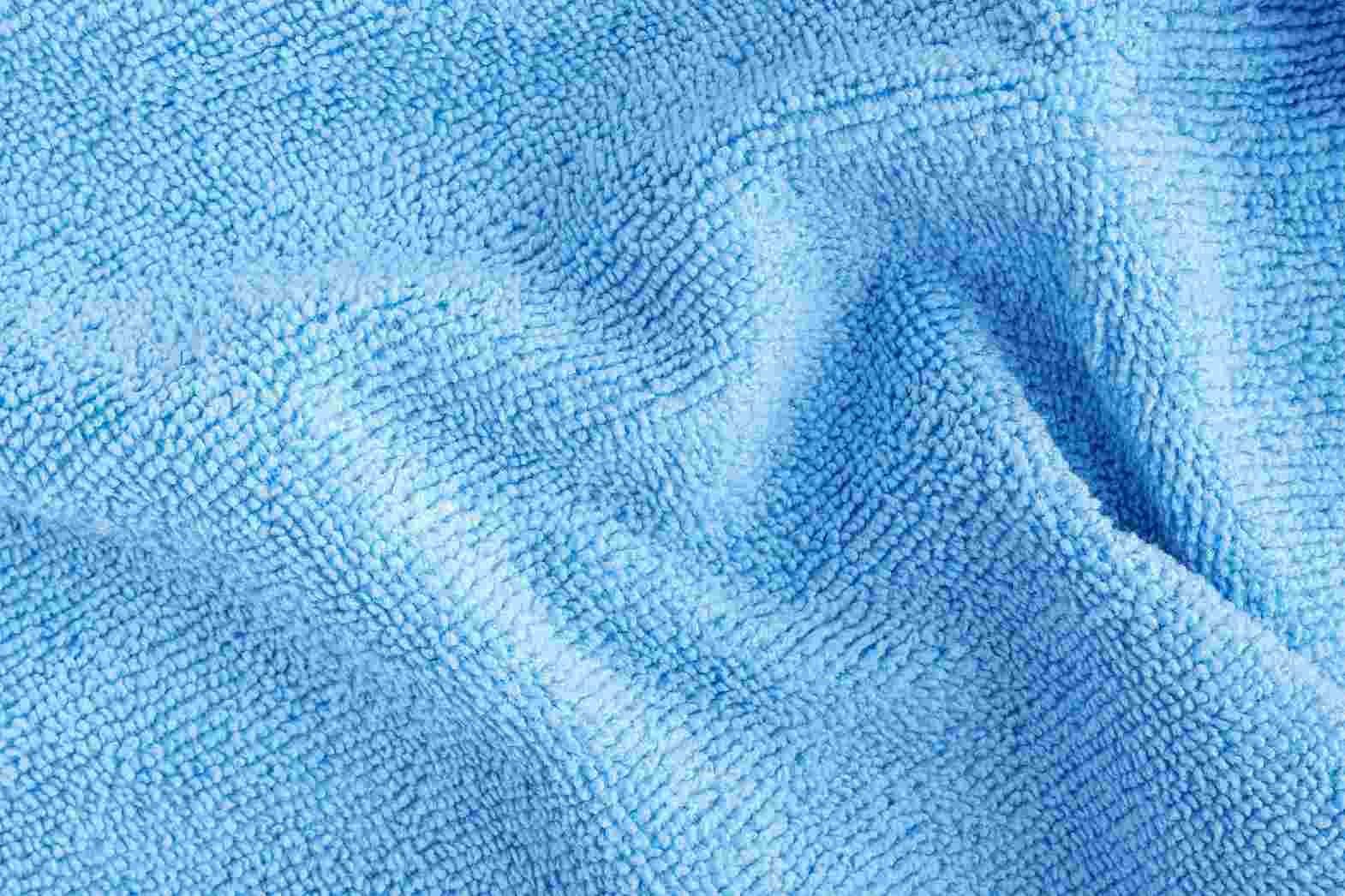After years of trialing, Dr. Miyoshi Okamoto scientist of Japan at Toray Industries, invented the world's first microfiber in 1970 and later his coworker Dr. Toyohiko Hikota improve a new practice and modify Dr. Okamoto's invention into an remarkable new fabric - Ultrasuede - a non-woven material and the first commercial production of microfiber commenced in 1989, in U.S by E.I. DuPont de Nemours & Company, Inc.
Microfibers: Very fine fibersMicrofiber is a variety of polyester that has exclusive and advantageous properties compared to other traditional fibers.Microfibers are heavily formed, polyester and polyamide fibers and are one hundred times finer than human hair. The diameter of microfibers is one-quarter of fine wool, one-third of the cotton, half of a fine silk fiber and the density of the material consent it to grip six to eight times of its weight in water.
"Denier" is the word used to describe the diameter or fineness of fiber. One denier measurement means a 9000-meter length of fiber or yarn in the weight of grams. Falling in the category of microfiber the size must be less than one denier i.e. minimum 0.9 denier requirements. Though, many microfibers are available in the size of 0.5 - 0.6 denier or even in less diameter.
Generally, microfiber is a mixture of polyester and polyamide (a nylon by-product) available in a mixture of 80/20, 75/25, or 70/30 etc polyester and polyamide ratios. Microfibers can be available alone or mixed with usual denier man-made fibers as well as with natural fibers such as cotton, wool, silk even rayon too. Micro-fibers are made from polyester, nylon, rayon and most recently acrylic. They also can be blended with other fibers including Lycra spandex. These mixtures improve the look; adorn and the performance of the fabric. Micro-fibers can be woven or knitted into a wide range of fabrics such as satin, faille, crepe, twill, taffeta and broadcloth. A variety of microfibers and its finishes improves the appearance and experience like silks, sand washed, or a leather and feather look.
In market generally microfibers are available with various names or trade names according the properties made by the manufacturers.
- Lightweight and flexible
- Good stability and shape retention
- Anti-wrinkle property
- Have a wicking ability that permits perspiration
- Comfortable to wear as they are more spongy
- Doesn't water stain - superior water repellency is available
- Woven or knitted into a very high quality fabric construction
- Formerly commenced as a polyester microfiber, today you can find nylon, rayon and acrylic microfibers too.
- Strong and durable, water repellent and wind resistant -so tightly woven, that the fabric can't be penetrated by wind, rain or cold
- Lightweight, resilient or resist wrinkling, have a comfortable array, preserve shape and resist pilling
- The positively charged microfibers draw dust; the tiny fibers are capable to enter the microscopic surface voids most materials
- Washable, dries quickly and also washable in at the water temperatures up to 200 degrees and their characteristics will remain intact.
- Electrostatic effect - Hair, lint and other dust particles are attracted and grabbed by the microfibers without lifting dust
- The density of the material allowable it to grip six to eight times its weight in water hence high absorbing power capacity
- The attraction capability of the microfibers is so sound, even absorbs bacteria and germs - hence can be use as germ or bacteria free purpose
- The fabric consists of millions of small tiny conduits that carry oil and grease too.
- Comfortable - very soft, texture like silk, lightweight
- Due to its fineness and superior fiber surface area making deep, rich and bright colors achievable
- Less "sweaty" in warm weather than usual synthetics
- Quickly cleanable - clean just with water
- Highly intense and shrink-resistant
- Presents insulation and breathability
- .Change without help - to establish lovely drape
- .Very fine - finer than the most precise silk
- .More reusable for cleaning alternative - compared to other mops more efficient and long life
The use of microfibers: Endless
The straight and strong fibers of polyester and nylon - microfibers provide flexible and silky performance because of its extensive fiber surface area. Microfibers are used in diverse fabrics ratios to make different textile garments, apparels and used most regularly in dress making.
Today it is used at the optimum level by sportsmen, popular for outerwear and body wear and became a very popular alternative tool of cotton apparel, because due to their properties of air intervenes effortlessly through the fabric, body's humidity is wicked away immediately from the skin's surface to the outer face of the fabric and it keeps the athletes cool and dry.
It is also used for making suit jackets, rainwear, outdoor fleece and wind-resistant sportswear, as well as tents, sleeping bags, track and jogging suits and many more uses like automotive, household and health & beauty etc. Endless uses for micro-fiber fabrics covers men's slacks and ties, women's silk-like blouses and dresses, hosiery and lingerie, evening wear, children's wear, intimate apparel, luxurious upholstery fabrics, sheets and pillow cases, high performance filters, artificial blood vessels, sanitary and towel products etc. Even microfibers use to make stockings for men, women and special high length anti-embolism stockings too.
Products such as microfiber towel or napkin are available in the blend of 80% polyester (the scrubbing and cleaning fiber), and 20% polyamide (the absorbing and quick drying fiber, this blend is expressed as "80/20") or 70/30 or in various blends. Several credible reasons to use microfibers towel are:- Not generating any problems with those suffering from allergies due to its hypoallergenic properties
- Microfiber absorbing over six to seven times its weight in water - super absorbent
- Microfiber dries in 1/3 the time of regular cleaning towels.
- Microfiber is environmentally friendly washable with just water, have no need of soap or any kind of chemicals.
- Microfiber is over four to five times more effective than ordinary cleaning towels
- Microfiber is totally lint free and non-abrasive compared to other cotton towels
Microfiber became a tremendously efficient cleaning material because of their characteristics of dust appealing and the capacity of entering the microscopic surface which pores of most materials due to their positively charged microfibers. It uses as janitorial and all purpose cleaning and wiping tools or cloths. Even it develops very small cutting boundaries that smash ups and easily sucks up dirt of particular surface, also eliminate oils and other grimy substances immediately. Due to its tremendous washable properties it is also used to clean equipment such as monitors, printers, plastic sheeting, metal surfaces, office & lab equipment and many more.
Today it is considered as a good alternative of cotton mop because it is reusable many times compared to other mopping device or clothes. In hospitals microfibered mopping are widely used due to its electrostatic effect - Hair, lint and other dust particles even bacteria and germs are attracted and grabbed by the microfibers without lifting dust and acts as effective pollution, dust bacteria control device. Without the application of any chemical or a cleaning agent microfiber wipes any surface and can disinfect bacteria/germs up to 99.95%. The result shows that its reduces 95 % chemical cost related to mopping tasks , saves 60% lifetime cost for mopping and saves labor cost about 20% per day.
Microfibers can usually be treated similar to that of the usual fibers manufactured from the same fiber group or type. For example, fabrics prepared from polyester and nylon microfibers can most likely be cleaned and dried out comparable to fabrics produced from usual polyester and nylon fibers. Viscose rayon functions well when dry-cleaned. Polynosic or high wet modulus rayons are washable in machines.
According to the fiber, whether it is polynosic or viscose-type rayon, rayon microfiber the right treatment of washing the fiber is needed. During dry winter, when heating systems are turned on and the humidity is low static charges may built up in fabrics from synthetic microfibers and temporary spots from unnecessary heat in the dryer may generate on the microfiber, take care during this instance.
.Because fibers such as polyester or nylon are very fine or small in diameter, heat enters the fibers faster than other fibers and due to heat sensitive properties, hence glazing, melting or scorching can arise quickly; a few cares should be required for microfibers.
- Work with a cool iron, do not put down the iron on the fabric too long, don't pressure too much.
.Bleach smash down the polyester and polyamide microfilaments, representing them not as much of useful hence microfiber products do not required bleach.
- Avoid the use of bleach.
.Coating of "softener" clogs the microfibers.
- Avoid the use fabric softener
.Washing microfiber with other cotton products grab and hold other cotton fibers.
- Avoid washing with other cotton products.
.Microfibers are tremendously fine, putting the garments with jewelry could scrape garment easily and widespread abrasion.
- Avoid making garments with jewelry that is violent or sharp
It is the comfortable experience and appearance of the fabrics which makes microfibers so special for many product lines they can carry their marvelous performance to an extensive and countless uses and today it is considered as the most advantageous fiber of the age.





20240924091633.png)







Comments